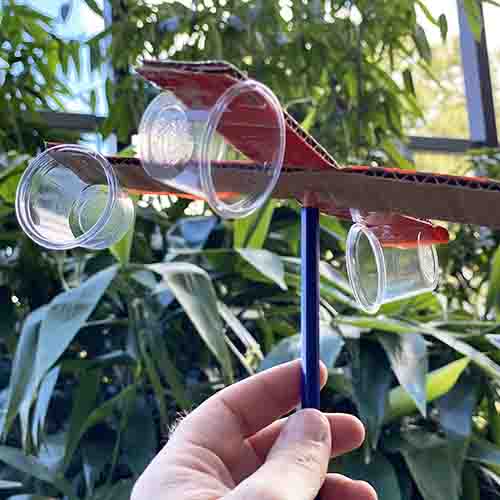Exploring the Functions and Advantages of Anemometers for Climate Enthusiasts and Experts
Anemometers stand as critical devices in the world of climate monitoring, satisfying both enthusiasts and seasoned professionals alike. These gadgets use a home window right into the vibrant globe of wind patterns and rates, offering invaluable data for meteorological analysis and forecasting. From cup anemometers to sonic anemometers, each type brings its special set of advantages and applications, shedding light on different aspects of atmospheric problems. As we delve into the features and benefits of anemometers, a deeper understanding arises not only of dominating weather phenomena however additionally of the more comprehensive implications for sectors like wind power production and ecological study.
Value of Anemometers in Weather Tracking
Anemometers play a crucial duty in weather condition tracking by providing precise measurements of wind rate, aiding in projecting and understanding weather condition patterns. These tools, ranging from traditional mug anemometers to modern ultrasonic anemometers, are important for meteorologists, researchers, and weather condition enthusiasts alike. By determining wind speed, anemometers assist in identifying the intensity of climate phenomena such as tornadoes, tornados, and storms. Additionally, they supply useful data for air travel, maritime procedures, and numerous industries that are sensitive to wind conditions.

Types of Anemometers and Their Applications
With the essential role anemometers play in climate surveillance and projecting, comprehending the different kinds of these tools and their applications comes to be important for professionals and fanatics in the area. The most common kinds of anemometers include cup anemometers, vane anemometers, hot-wire anemometers, and ultrasonic anemometers. Cup anemometers contain 3 or four mugs installed on horizontal arms that revolve with the wind, gauging its rate. Vane anemometers, on the various other hand, make use of an easily rotating vane to align with the wind direction, providing both wind rate and direction dimensions. Hot-wire anemometers run based on the concept of convective warm transfer, where the cooling result of the air circulation is determined to identify wind rate. Ultrasonic anemometers utilize ultrasonic acoustic wave to compute wind speed and direction precisely.
Mug anemometers are robust and ideal for general weather condition surveillance, while vane anemometers are favored for directional measurements. Ultrasonic anemometers are non-intrusive and supply high precision, typically utilized in research and specialized weather condition tracking applications.
Advantages of Using Anemometers in Projecting
In meteorology, the use of anemometers uses vital benefits for boosting the precision of weather condition forecasting. Anemometers measure wind speed learn the facts here now and instructions, supplying vital information for anticipating weather condition patterns. By incorporating wind data into forecasting models, meteorologists can better understand the activity of climate systems, prepare for changes in weather, and concern a lot more precise projections.
Moreover, anemometers play an essential function in evaluating potential climate dangers. Keeping an eye on wind speeds helps forecasters anticipate severe climate events such as hurricanes, hurricanes, and winter season storms with better precision. This early caution system allows authorities to issue timely alerts and execute required safety measures, lowering the dangers to life and residential property.
Additionally, anemometers aid in optimizing renewable resource manufacturing. By evaluating wind patterns, meteorologists can identify appropriate areas for wind farms and forecast power outcome, contributing to the reliable generation of wind power.

Anemometers in Wind Energy Production
Offered the crucial function anemometers play in supplying accurate wind information for weather forecasting and danger evaluation, their value includes the world of wind energy production. Anemometers are crucial instruments in the field of wind energy, where the dimension of wind rate and direction is essential for establishing the usefulness and performance of wind turbine installments. By properly determining wind rates at varying heights, anemometers help enhance the placement and layout of wind generators to take full advantage of power result.
In wind ranches, learn this here now anemometers are strategically placed to collect real-time wind data that is used to assess the potential power production of a website. This information is crucial in establishing the financial stability of wind power jobs and in projecting energy generation to ensure grid security. In addition, anemometers help in monitoring wind problems to enhance wind turbine performance, prevent damages from high winds, and ensure the safety and security of employees operating in the vicinity of wind generators.
Enhancing Climate Comprehending With Anemometers

Anemometers play a vital duty in boosting our understanding of microclimates. These local climate condition can vary dramatically from more comprehensive local projections, making it vital to have precise data for particular areas. anemometer. By tactically placing anemometers in different locations, researchers can collect in-depth info on how wind behaves in various surfaces, metropolitan environments, or bodies of water
Moreover, anemometers add to enhancing weather condition forecasting versions by offering real-time data on wind actions. This details is especially valuable for forecasting serious weather occasions, enhancing agricultural techniques, and supporting industries like air travel and maritime navigation. On the whole, anemometers are very useful tools that enable us to dig deeper right into the complexities of climate systems, eventually resulting in even more better-informed decisions and precise predictions.
Final Thought
In verdict, anemometers play an important duty in weather monitoring and projecting by gauging wind rate and direction. Anemometers also have applications in wind energy manufacturing, more highlighting their significance in both meteorology and eco-friendly energy industries.
From cup anemometers to sonic anemometers, each type brings its special collection of advantages and applications, shedding light on different aspects of atmospheric conditions. These instruments, ranging from conventional mug anemometers to modern-day ultrasonic anemometers, are essential for meteorologists, researchers, and weather enthusiasts alike. The most usual kinds of anemometers consist of mug anemometers, vane anemometers, hot-wire anemometers, and ultrasonic anemometers. Mug anemometers are durable and ideal for general weather condition tracking, while vane anemometers are favored for directional measurements. Anemometers are vital instruments in the field of wind energy, where the dimension of wind rate and instructions is vital for determining the usefulness and performance of wind generator setups.